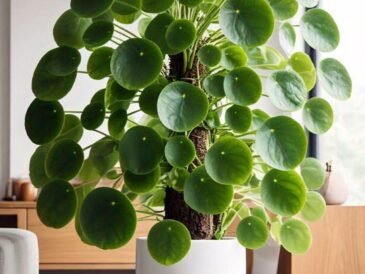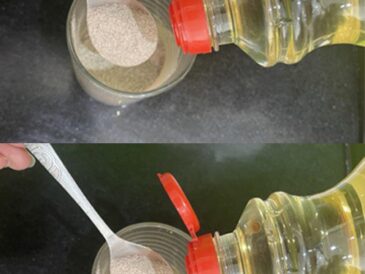Aloe vera is a versatile, resilient, and often self-sustaining plant, beloved for its medicinal properties, its ornamental appeal, and its easy-care nature. A succulent native to arid regions, Aloe vera thrives in bright sunlight and thrives with minimal water and attention. Despite being a hardy and low-maintenance plant, aloe vera can sometimes develop a common growth problem—becoming leggy, leaning over, or growing in a way that seems unbalanced. If you’ve found yourself wondering how to get your aloe vera growing upright, you’re not alone. Fortunately, there are several ways to encourage your aloe vera to grow strong, stable, and upright.
This detailed guide will explain the factors that influence aloe vera’s growth patterns, identify the common reasons why it might become tilted or floppy, and provide practical, step-by-step advice on how to keep your aloe vera plant growing tall and upright. Additionally, we will offer extra tips to help ensure your aloe vera stays healthy, vibrant, and ready to produce the wonderful benefits that it is known for.
Understanding Aloe Vera’s Natural Growth
Before we dive into the techniques that will help your aloe vera grow upright, it’s important to understand its natural growth pattern. Aloe vera is a rosette-forming succulent, meaning it grows in a spiral pattern, with thick, fleshy leaves radiating outward from the center. As the plant matures, the leaves naturally grow longer, which can make the plant appear top-heavy or unstable. However, in nature, aloe vera plants are typically short and spread out along the ground.
Aloe vera’s rosette of leaves naturally grows toward the sun in the wild, and this tendency is just as evident in your home. If the plant is growing in a location where the light source is uneven or limited, it may lean toward the light, causing the plant to become lopsided or leggy.
Why Does Aloe Vera Grow Slanted or Floppy?
There are several common reasons why your aloe vera may not be growing upright. Understanding the root causes of these issues can help you take corrective action to restore the plant’s structure.
1. Insufficient Light
Aloe vera is a sun-loving plant that requires at least six hours of bright, direct sunlight per day. When an aloe vera plant doesn’t receive enough light, it may begin to stretch toward the light source in an effort to get more exposure. This can result in elongated, leggy growth, which can make the plant appear slanted or leaning. Additionally, lack of light can weaken the plant’s overall structure, making it prone to falling over.
If your aloe vera is growing in a dark corner or near a window that doesn’t receive much light, this could be one of the primary reasons it’s not standing upright.
2. Overwatering or Poor Drainage
Aloe vera plants are succulents, and succulents generally thrive in dry conditions. Overwatering can lead to root rot, which is one of the leading causes of an unstable aloe vera plant. When the roots become waterlogged, they lose their ability to support the plant properly, and the aloe vera’s growth can become weak and limp. Additionally, poor drainage in the pot can exacerbate this problem, as the water accumulates around the roots, leading to rot and instability.
If your aloe vera is kept in soggy soil or a pot without drainage holes, it’s likely to suffer from poor root health, causing it to tip over or become unbalanced.
3. Inappropriate Pot Size
Choosing the right pot is key to supporting upright growth. If your aloe vera is placed in a pot that’s too large for its root system, the roots will struggle to anchor properly, and the plant may become unstable. This could lead to a leaning or floppy appearance as the plant grows taller without a strong base to support it. On the other hand, if the pot is too small, the roots will become constricted, and the plant may also struggle to grow properly, leading to weak and spindly growth.
A pot that is too large can also cause the soil to stay wet for longer periods, which, as mentioned earlier, can increase the risk of overwatering and root rot.
4. Excessive Fertilizing
Aloe vera doesn’t need a lot of fertilizer. Over-fertilizing can cause the plant to grow too quickly, leading to weak, spindly stems that are more prone to tipping over. While aloe vera can benefit from occasional fertilization, it’s important to avoid overdoing it. Fertilizing too frequently or with too strong a concentration can lead to rapid, unbalanced growth.
5. Temperature Fluctuations and Drafts
Aloe vera plants are native to hot, dry environments, and they thrive in warm temperatures. If your aloe vera is exposed to sudden temperature fluctuations or cold drafts, it may become stressed, leading to weak growth. Cold drafts, especially in winter, can cause the plant’s structure to weaken, making it more likely to fall over. A temperature drop below 50°F (10°C) can also stunt the plant’s growth and make it more vulnerable to disease and pests.
6. Age and Natural Growth Pattern
Older aloe vera plants may naturally begin to tilt or lean as they grow larger and heavier. Aloe vera plants can continue to grow for many years, and as they mature, the plant may become top-heavy, especially if it is not regularly pruned or maintained. In some cases, aloe vera plants can develop offsets, or “pups,” that grow out from the main rosette, which can cause the main plant to lose its balance.
How to Help Aloe Vera Grow Upright: Step-by-Step Tips
Now that we understand why aloe vera might be growing in an unbalanced or tilted way, let’s look at the steps you can take to get your aloe vera growing upright and strong.
1. Place Aloe Vera in a Sunny Location
Click page 2 for more



